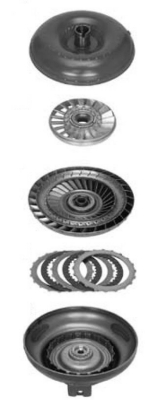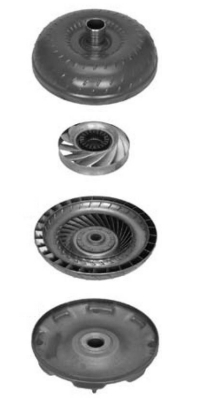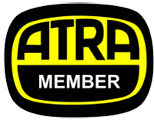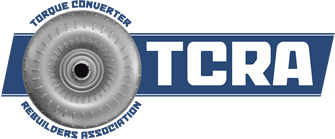Best Darn Torque Converters in the World!
Torque Converter - F.A.Q.'s
 Lock up |
 Non Lock up |
What is a torque converter?
A torque converter must be used when running an automatic transmission and is sometimes considered part of the transmission. The torque converter is a separate entity from the transmission and serves three primary functions. First, the torque converter, like the name denotes, transfers engine torque to the transmission. This also allows the vehicle to come to a complete halt without stalling. Not only does the torque converter transfer engine torque to the transmission and the transaxle gear-train but is also amenable for multiplying that same engine torque to the transmission. This is the torque converter's secondary function and results in greater vehicle performance. Thirdly, the torque converter provides a direct-drive, or mechanical link from the engine to the transmission. This is versed through the use of a torque-converter clutch.
What is lockup?
When the turbine spins slower, so does the impeller. This creates slippage and an increased amount of heat. This greater amount of heat reduces fuel economy and can damage the torque converter and the engine. A lockup converter will eliminate the slippage, reducing the heat and improving fuel economy. Ideally, the converter should lockup at a 1:1 torque ratio.
What is the stator?
The stator assembly redirects the flow of fluid returning from the center of the turbine into the same direction that the engine is turning the converter pump.
What does the torque converter do?
A torque converter connects the engine to an automatic transmission. This operates much like a clutch would function with a manual transmission. The housing, or outer casing, of the torque converter bolts right onto the engine and spins coupled with the engine. The torque is transmitted, and approximately doubled from the engine to the transmission which results in a higher degree of acceleration.
On the perimeter of the converter not attached to the engine, the torque converter's turbine is connected to the transmission's input shaft. Inside the converter is a Stator Assembly. The Stator Assembly redirects the fluid flow which results in more torque and better acceleration. The torque converter also allows a vehicle's engine to disengage from the differential so the vehicle can stop advancing while the engine is still running and the transmission is in gear. Again, the torque converter functions like a clutch in a manual transmission, releasing the engine from the differential and allowing the vehicle to idle.
How does the torque converter work?
The torque converter is, essentially, a fluid pump. It shares fluid with the transmission that is pumped outward toward the outside of the torque converter. Inside is the torque converter is an impeller. This impeller is not unlike a small fan that uses centrifugal force to pump the transmission fluid. The impeller faces the turbine of the engine. The faster the turbine spins, the faster the impeller spins and, subsequently, the more torque transferred from the engine to the transmission.



